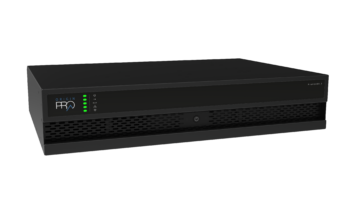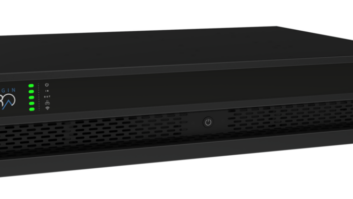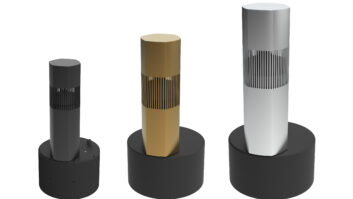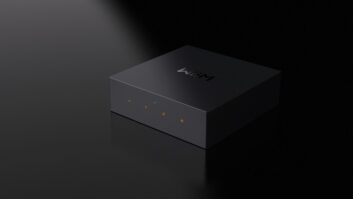Generally speaking, I have a habit of not making demands of my Residential Systems overlords. I’m just the hired help, after all, and I have an aversion to being fired. But I do have one request: if you want me to install and review an outdoor speaker system, get it to me in early spring or late autumn. After all, walking out of the house anytime between May and September here in central Alabama feels like getting slapped in the face with a boiling wet mop, and the only legitimate reason to go outside at all during July and August is to catch a nearby Pikachu or Snorlax.
Or so I thought. Turns out, a new outdoor speaker system from Origin Acoustics is also reason enough to dig trenches and bury subwoofers in the sort of heat that causes the atmosphere to explode with little or no warning. Why? Well, for one, the AcoustaScape AS41 Hi-Fi Landscape Audio System says “Origin Acoustics” right there on the box. If that doesn’t tell you something, you’ve obviously been ignoring the custom installation audio market for the past two years.
For another, the AcoustaScape system stands out in its own right when compared with its competition in the outdoor speaker market. Generally speaking, outdoor audio falls into two pretty distinct categories: those speakers that mimic the performance of architectural speakers, designed for installation in, on, or around a covered patio area; and the plant-em-in-the-ground types designed to fill the air with music no matter where in the yard you may be.

The Origin Acoustics A1 Satellite and A8SUB subwoofer The AcoustaScape is that unusual sort of outdoor speaker system that’s definitely of the plant-em-in-the-ground type, but nonetheless designed to be aimed specifically at a sweet spot in the middle, be it a pool or swing, or hammock, or what have you. Perhaps more importantly, it’s designed as a turnkey system, with everything you need to create a complete outdoor stereo speaker setup included in one box (excluding amplifier and speaker cables, of course).
It’s also complemented by the optional AcoustaScape AS4SAT Speaker Expansion Pack, which includes two additional satellite speakers and two ground spikes, as well as four waterproof wire nuts. You can add up to two additional expansion packs to the base AcoustaScape system, for a grand total of eight satellite speakers in addition to the A8SUB subwoofer.
Origin Acoustics doesn’t offer its own outdoor amp, but that’s okay because the AcoustaScape system is designed to be driven by pretty much any standard speaker binding post, be it from a receiver, a dedicated outdoor amp, or Origin Acoustic’s A2150 Class D stereo amplifier, which the company sent along to accompany my review system.
The system is designed such that the base package, including four satellite speakers and the subwoofer, connected in series, results in a nominal 8-ohm load. And there are effectively two ways you can connect the system: either by using a pair of dual-conductor direct burial speaker wires, or by using a four-conductor spool and dedicating two conductors to your left-channel speakers and the other two to the right. Either way, both sets of connectors will be connected to the subwoofer and there are no crossover settings to worry about.

AcoustaScape is designed as a turnkey system. I went the dual-conductor route since it ended up being a little cheaper per foot and resulted in less wasted wire, but you may find that your needs vary from installation to installation. Either way, digging the trenches for the wire ended up being the most strenuous part of my installation. Even digging the hole for the sub wasn’t bad, since the buried part of it as about the size of a bucket you might use when mopping the kitchen.
Adding an additional AS4SAT Speaker Expansion Pack (or two) to the system will reduce the impedance and increase the current draw, but even adding two expansion packs won’t double it (since you’re not adding an additional subwoofer), so any amp that’s stable down to 4 ohms should be more than sufficient to drive even the largest allowable AcoustaScape system.
With all of my holes dug and my system in place, I sat down to give it a whirl, and was immediately impressed. Not so much by the detail, but definitely in the expansiveness and richness of the AcoustaScape system.
With the Lovin’ Spoonful’s “Summer in the City,” the system demonstrated just how capable it is of handling the wonderfully wide and weird stereo mixes of the late ‘60s. The music positively whooshed from one side of my yard to the other. And with Nick Gilder’s “Hot Child in the City,” the chorus vocals seemed to stretch from Selma to Auburn.
If there’s one nit to pick, it’s that the system is a little more reserved in the upper-bass/lower-midrange region, so songs like Red Hot Chili Peppers’ “Higher Ground” lack a little oomph, and during Sly & the Family Stone’s “Hot Fun in the Summertime,” I noticed that Larry Graham’s deep voice was a little subdued in the mix.
Honestly, though, to expect such small, unobtrusive speakers to generate such a huge bubble of sound and be perfectly tonally balanced at the same time would be asking a bit much. AcoustaScape isn’t designed for critical listening. It’s designed to deliver nice, immersive sound over a large open area, and not drive your neighbors crazy in the process. On that count, it’s a total win. It’s also designed to stand up to the elements, which it totally has so far.
I can’t wait to spend more time listening to this system. But, like, you know, in October.







